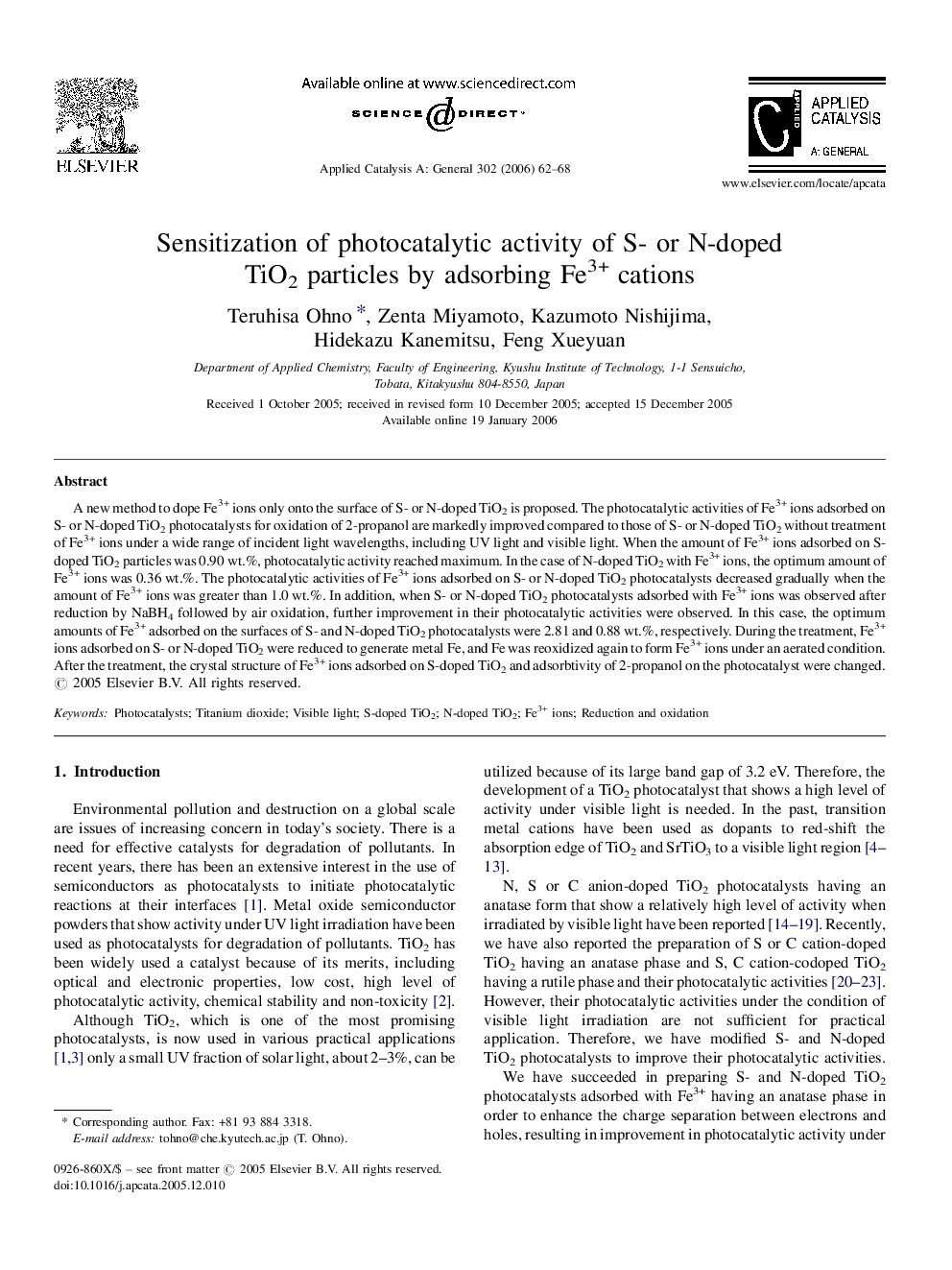| Article ID | Journal | Published Year | Pages | File Type |
|---|---|---|---|---|
| 43879 | Applied Catalysis A: General | 2006 | 7 Pages |
A new method to dope Fe3+ ions only onto the surface of S- or N-doped TiO2 is proposed. The photocatalytic activities of Fe3+ ions adsorbed on S- or N-doped TiO2 photocatalysts for oxidation of 2-propanol are markedly improved compared to those of S- or N-doped TiO2 without treatment of Fe3+ ions under a wide range of incident light wavelengths, including UV light and visible light. When the amount of Fe3+ ions adsorbed on S-doped TiO2 particles was 0.90 wt.%, photocatalytic activity reached maximum. In the case of N-doped TiO2 with Fe3+ ions, the optimum amount of Fe3+ ions was 0.36 wt.%. The photocatalytic activities of Fe3+ ions adsorbed on S- or N-doped TiO2 photocatalysts decreased gradually when the amount of Fe3+ ions was greater than 1.0 wt.%. In addition, when S- or N-doped TiO2 photocatalysts adsorbed with Fe3+ ions was observed after reduction by NaBH4 followed by air oxidation, further improvement in their photocatalytic activities were observed. In this case, the optimum amounts of Fe3+ adsorbed on the surfaces of S- and N-doped TiO2 photocatalysts were 2.81 and 0.88 wt.%, respectively. During the treatment, Fe3+ ions adsorbed on S- or N-doped TiO2 were reduced to generate metal Fe, and Fe was reoxidized again to form Fe3+ ions under an aerated condition. After the treatment, the crystal structure of Fe3+ ions adsorbed on S-doped TiO2 and adsorbtivity of 2-propanol on the photocatalyst were changed.
